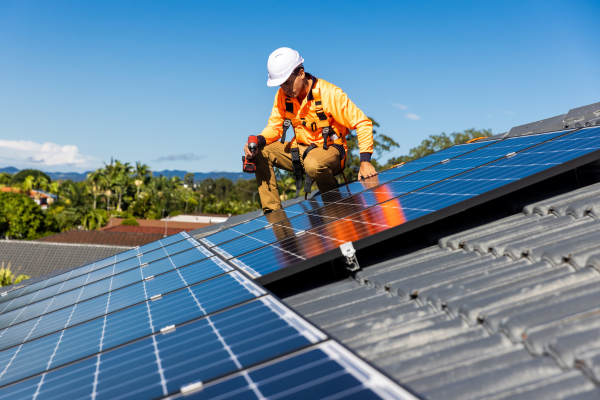How Much Can You Save with Solar Energy in Australia?
Australia is renowned for its abundant sunshine, making it a prime location for harnessing solar energy. As electricity costs continue to rise, many homeowners are considering solar power as a way to cut expenses and promote environmental sustainability. But how much can you actually save by switching to solar energy in Australia? This comprehensive guide breaks down the factors that affect the cost of solar systems and the potential savings they offer, helping you decide if solar energy is the right choice for your home.

Understanding the Cost of Solar Systems in Australia
The cost of installing a solar system in Australia can vary widely. Several key components influence these costs, and understanding them can help you make informed decisions.
- Panel size: Larger systems, such as those with 5kW or more, generate more electricity, leading to greater long-term savings. However, they come with a higher initial cost.
- Panel type: Monocrystalline panels are generally more efficient and longer-lasting than polycrystalline panels, but they are also more expensive.
- Inverter type: String inverters are a more affordable option but come with limitations compared to microinverters, which offer greater performance and flexibility.
- Panel efficiency: Panels with higher efficiency convert more sunlight into electricity, potentially leading to greater savings.
- Battery storage: Adding a battery system allows you to store energy, increasing your independence from the grid and potentially further reducing your electricity bills, although this adds to the upfront cost.
- Roof type & accessibility: Complex roof structures or difficult access points can increase the overall installation cost.
- Labour costs: Labor costs vary by state and region, affecting the overall price of installation.
- Permits and approvals: Local council permits and inspections are necessary and add to the initial upfront cost.
Average Solar System Costs by State in Australia:
|
State |
Small (2-3kW) |
Medium (5-6kW) |
Large (7+kW) |
|
NSW |
$3,000 - $6,000 |
$6,000 - $12,000 |
$12,000+ |
|
VIC |
$3,500 - $7,000 |
$7,000 - $14,000 |
$14,000+ |
|
QLD |
$2,500 - $5,000 |
$5,000 - $10,000 |
$10,000+ |
|
WA |
$3,200 - $6,400 |
$6,400 - $12,800 |
$12,800+ |
|
SA |
$2,800 - $5,600 |
$5,600 - $11,200 |
$11,200+ |
|
NT |
$3,500 - $7,000 |
$7,000 - $14,000 |
$14,000+ |
|
ACT |
$3,200 - $6,400 |
$6,400 - $12,800 |
$12,800+ |
|
TAS |
$3,000 - $6,000 |
$6,000 - $12,000 |
$12,000+ |
Please note these figures are approximate. It is crucial to obtain a personalised quote based on your specific area and system requirements.
Factors Influencing Solar Savings
While the initial investment in a solar system can be significant, the potential savings from solar energy are substantial, especially over the long term. Here are some factors that influence how much you can save:
- Electricity Consumption: The more electricity your household uses, the more you can potentially save with solar energy.
- Location and Sun Exposure: Locations with more sunlight and less cloud cover generate more solar power, leading to greater savings.
- Feed-in Tariffs: Some electricity providers offer feed-in tariffs that credit you for the surplus solar energy you send back to the grid.
- Energy Efficiency: Improving the energy efficiency of your home through energy-saving appliances and reducing energy waste can increase your savings.
- Solar Panel Output: The size and efficiency of your solar panels play a significant role in the amount of electricity generated.
- Government Rebates and Incentives: The Australian government offers various schemes and rebates to make your solar purchase more affordable. For example, the Small-scale Renewable Energy Scheme (SRES) provides rebates for installing solar systems in select states.
How Much Can You Save with Solar?
The potential savings vary based on several factors. For instance, a typical 5 kW solar system in Sydney can generate approximately 7,000 kWh of electricity per year. With average electricity prices at around $0.30 per kWh, this could result in annual savings of around $2,100.
How Long Does it Take to Pay Off a Solar System?
The payback period is the time it takes for your solar system savings to offset the initial investment cost. This depends on factors like your electricity usage, the system's size and cost, and government incentives.
For example, a typical 5 kW system, costing around $6,000 after rebates, may have a payback period of around 3-4 years, based on annual savings of approximately $2,100.
Calculating Your Potential Savings:
There are several ways to estimate your potential savings:
- Solar panel calculator: Online calculators can help you estimate your savings based on your location, the size of your solar system, and your level of energy usage.
- Consultation with solar professionals: Speaking to solar system experts can provide you with a personalised estimate and tailored solution for your specific needs.
Beyond the financial benefits:
- Environmentally friendly: Solar power reduces your reliance on fossil fuels, helping you contribute to a cleaner and more sustainable future.
- Increased energy independence: Solar empowers you to generate your own power, reducing your dependence on the grid, particularly during peak summer periods.
- Enhanced property value: A solar system can increase the value of your property, attracting environmentally conscious home buyers.
Embracing the Solar Movement
Switching to solar energy in Australia can be a smart investment with long-term benefits. By understanding the costs, savings, and factors that influence your solar investment, you can make an informed decision about whether solar is right for you. If you have any questions or need more information about your specific solar needs, don't hesitate to get in touch.

